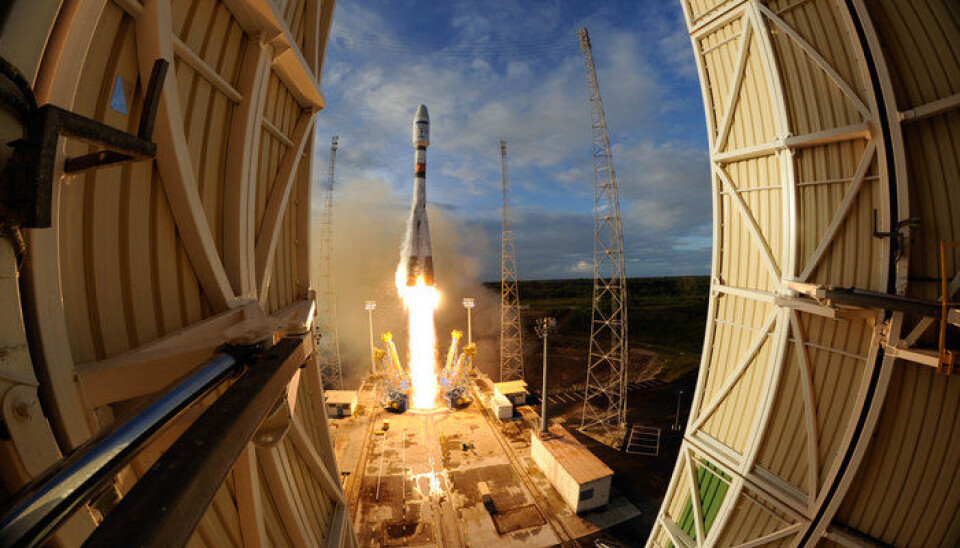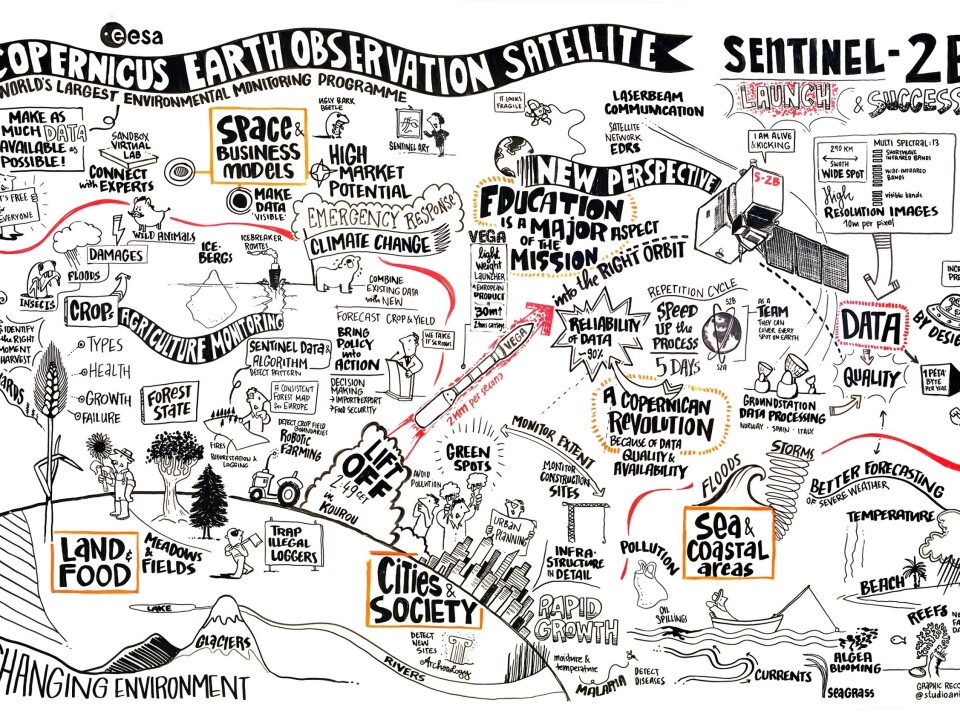
Scientists: Europe is committed to Earth monitoring programs, even if the USA is not
Possible cuts to US climate and satellite programs have scientists on both sides of the Atlantic concerned. Europe is already talking a lead in the face of US uncertainty, but they should not be complacent, say scientists.
Climate science may be under pressure in the US, but Europe can still lead the way.
This is the view of a number of Nordic scientists, that ScienceNordic has spoken with in light of a budget “blueprint” released by the Trump White House last week.
The blueprint proposes budget cuts that may impact key US climate science agencies and terminate future satellite programs that monitor weather and climate in the US, with possible implications for weather forecasters and climate researchers elsewhere. You can read more about the proposed cuts and the programs that are affected here.
But despite the change in direction of US climate policy and research funding, European research institutions and agencies are ready to carry the torch, say scientists.

“It's a proud time for the EU,” says Professor Jason Box, a glaciologist at the Geological Survey of Denmark and Greenland (GEUS).
“The US had a similar proud time for Earth Observation with its 1990's Mission to Planet Earth (MTPE) and Earth Observing System (EOS). These had a huge impact. It's like the EU and other intentional partners such as Japan, now carry the torch,” he says.
Read More: New USA budget: Planned cuts to climate and satellite programs
“The EU has made a multi-decade commitment”
Box believes that funding cuts to US satellite programs will have limited impact in Europe, since the EU are already committed to funding a number of Earth observing satellites through the European Space Agency (ESA) Copernicus program.
“The EU has made a multi-decade commitment. The train has left the station,” says Box.
This positive outlook is shared by climate scientist, Christian Rodehacke, from the Danish Meteorological Institute. “We will not lose our “eyes” to watch and monitor planet Earth,” says Rodehacke, in reference to proposed cuts in US satellite programs.
Japanese and European satellites, along with upcoming programs in China and India, should provide enough crucial data to maintain Earth observations needed by climate scientists and weather forecasters in Europe and elsewhere, he says.
“The European Copernicus Program could be seen as an example. Also the huge investments in China are indicative of a stronger role from them in the future,” says Rodehacke.
Read More: Calling all armchair scientists: ESA releases Greenland satellite data
Data gaps without the next generation of satellites
But Europe should not be too relaxed about any proposed cuts, says David Titley, a professor of meteorology at Pennsylvania State University who served as chief operating officer to the National Oceanic and Atmospheric Administration (NOAA) in the Obama administration. NOAA is one of the climate science agencies whose budget could be cut.
Europe may need to expand its existing and planned satellite programs to avoid data gaps if the US fails to launch the next generation of Earth monitoring satellites, says Titley.
“Before Europeans get too complacent, you do use a lot of the data from American satellites. If those data go away, because we don’t put up the next generation of satellites, then either you will need to come up with real money, like billions, between you and/or the Japanese to basically replace those satellites, or your weather forecasting capability will degrade as well,” he says.
Read More: COP21: Are we ready for what climate change has in store?
Climate research will also suffer
And it is not only weather forecasts that could be affected, says glaciologist Robert Schjøtt Fausto from GEUS.
“Many US climate satellite products are freely downloadable and can be used free of charge for research. So cutting the satellite program would mean a reduced service in this area, impacting every climate researcher around the world,” says Fausto.
But the impacts will also be felt more broadly, in terms of the future relationships between climate scientists and agencies around the world, says Titley.
“The US use the European and Japanese satellites, the Europeans and the Japanese use the US satellites. We all co-share and we all get the benefits. But if someone just pulls out and still expects the benefits, then it may not work that way,” says Titley.
Precisely what all this will mean for satellite programs and climate research in the US and Europe is uncertain. The proposed cuts will now be submitted to the US Congress, and a decision will be made later this year.
---------------
Read more about the budget blueprint and the propsoed cuts in this article: USA budget: Planned cuts to climate and satellite programs
External links
- Jason Box
- Christian B Rodehacke
- Robert Schjøtt Fausto
- Jens Hesselbjerg Christensen
- David Titley
- Budget Blueprint (White House)









